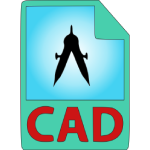Autodesk Fusion 360 for putter manufacturer SandFlo Golf
Description
In the town of Trollhättan in southwestern Sweden, engineer Johan Sandflo spends his days managing his precision machining business. At night, he perfects designs for SandFlo Golf‘s custom putters. He’s come to rely on Fusion 360 to help him follow both of those passions.
Sandflo started using Fusion 360 in the shop late in 2014 after he stumbled across it on YouTube. Once he downloaded a trial version, it didn’t take him long to get hooked, especially considering the responsiveness of the Autodesk team and user community online. “I tried it for a few weeks,” he says, “and haven’t looked back.”
In the job shop, CAM reigns supreme, especially for setting toolpaths. Sandflo particularly likes Fusion 360’s “awesome” adaptive clearing functionality for roughing out machined parts. In the past he’s used about ten different CAM applications, most recently a combination of Mastercam and OneCNC, but found that none of them worked as well: “Nothing compares to Fusion 360 for the kind of jobs that I do.”
When getting started with Fusion 360, Sandflo explains, “I went down the CAM side first,then kind of discovered the CAD side.” The CAD features make it simple for him to streamline his machining work, for example by taking a customer drawing and turning it into a proper CAD model.
Sandflo says he believes that “I have an advantage over other companies my size when I use Fusion 360.” In part that comes from the software’s functionality and cloud-based approach. But he also says that the thinking and interactions around the software are a refreshing departure from the rigid enterprise model that typically prevails. “It’s a modern take on it,” he says. “It’s not like anything else in the industry.”
And then there are the costs. Not only is Fusion 360 much cheaper than comparable programs, but you don’t have to pay extra for training. “It’s amazingly affordable,” Sandflo says, adding, “Why would you use something that’s ten or twenty times more expensive? I can invest that money elsewhere to make the business grow.”
Even better, the software has allowed Sandflo to extend his passion for golf. It makes him happy “to get a few hours in with friends, have a good laugh,” he says.
“Being a golf nerd,” he adds, “it’s always fun [tinkering] with equipment.” He began to look online for clubs that were “exotic, more personalized,” and then realized he could make his own. As he puts it, “I have the knowledge to do something like this myself. I have the machines. Why not start modeling something, see what happens?”
Before he discovered Fusion 360, it was slow going. He didn’t have enough CAD skills to do what he wanted to, and found the combination of SolidWorks and Mastercam unwieldy. Then everything changed. “When I found Fusion 360, that was the turning point,” he says.
“To make the changes — the small iterations, the small tweaks — it is so easy,” he adds. Fusion 360’s cloud-based approach is especially useful for him because it lets him squeeze in design work whenever he has time. “For me as a small business owner,” he says, “the ability to work at home at night when the kids are asleep is second to none. It’s so easy and convenient, and you have all the files available at a mouse click. . . . When I get to work the next day, it’s all done. So I can keep the machines turning.”
Using Fusion 360, he’s able to share putter designs with customers via a simple URL. Even if they’ve never used the software, it’s easy for the customer to view and rotate a 3D model of the latest design in any browser. “My customers have enjoyed that very much,” he says.
Details
Business tasks
Enhance Competitive Ability
Ensure Compliance
Problems
High costs
No control over implementation









